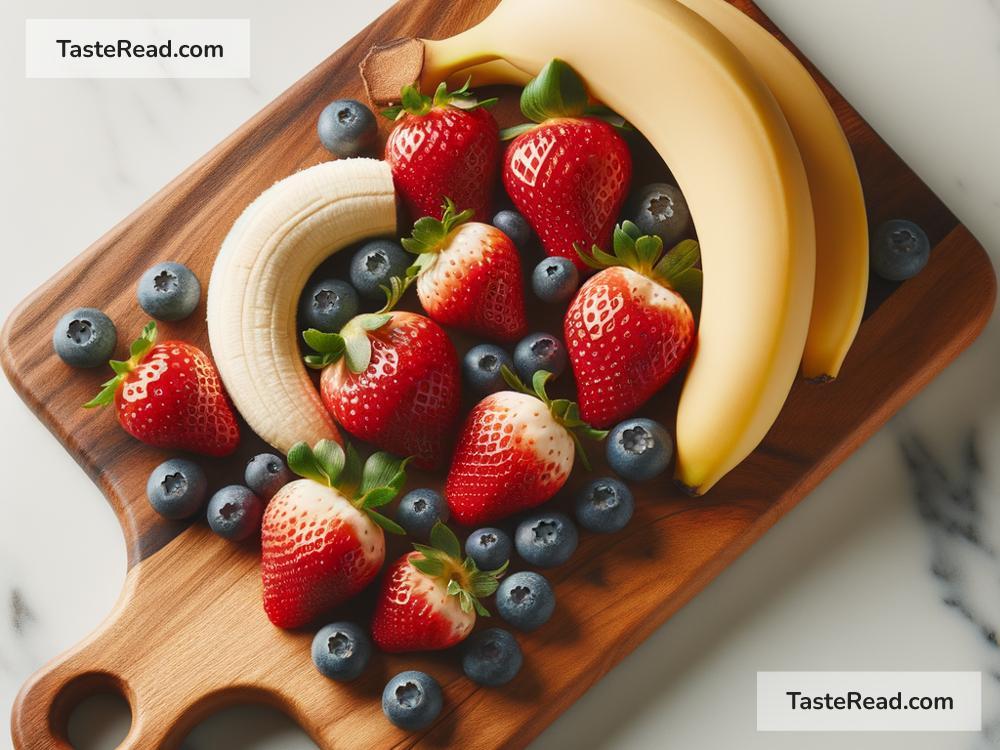Are Strawberries Technically Not Berries? Let’s Find Out!
When you think about strawberries, you probably picture that juicy red fruit that makes a perfect topping for your dessert or a healthy snack on a summer day. Strawberries are so popular that they’re often grouped with other berries, like blueberries, raspberries, and blackberries. But here’s the kicker: strawberries are actually not berries at all—at least not in the botanical sense. Confused? Don’t worry! In this article, we’ll break down the science behind this fascinating fact in simple terms.
What Is a Berry, Really?
To understand why strawberries aren’t berries, we first need to define what a berry actually is. Most of us use the word “berry” casually to describe small, juicy fruits that can be eaten whole and are often sweet or tart. But botanists—scientists who study plants—have a more specific definition.
In botanical terms, a berry is a kind of fruit that develops from a single ovary of a flower. It contains seeds embedded in the flesh, and it typically has three distinct layers: an outer skin, a fleshy middle, and an inner part where the seeds are found. Examples of true berries include fruits like grapes, tomatoes, bananas, and even eggplants!
Here’s the catch: a fruit like a raspberry or a blackberry doesn’t fit this definition. And neither does a strawberry. This brings us to the next big question: if strawberries aren’t berries, then what are they?
Why Aren’t Strawberries Classified as Berries?
Unlike true berries, strawberries don’t develop from the ovary of a flower. Instead, they grow from the flower’s receptacle—a part of the plant that supports the ovary. After pollination (when the flower is fertilized by pollen), the receptacle starts to enlarge and forms the fleshy part of the strawberry that we eat.
But that’s not all. Strawberries don’t have seeds inside their flesh, which is another important characteristic of true berries. Instead, their seeds are those tiny yellow-green dots you see on the surface of the fruit. Each of those “seeds” (called achenes) is actually a tiny fruit on its own! The strawberry is essentially a cluster of these small fruits attached to a swollen receptacle.
To summarize: strawberries are not true berries because (1) they don’t develop from the ovary of a flower, and (2) their seeds are on the outside, not inside.
What Is a Strawberry, Then?
Instead of being a berry, strawberries are classified as an “aggregate accessory fruit.” This sounds like a fancy name (and it is), but here’s what it means:
- Aggregate fruit refers to a fruit that forms from multiple ovaries of a single flower. Each ovary produces one small, seed-like fruit.
- Accessory fruit means that the edible part of the fruit doesn’t come directly from the flower’s ovary but from another part of the flower. In the case of strawberries, the juicy red part we eat comes from the flower’s receptacle.
When you put these two terms together, it perfectly describes a strawberry! It’s an accessory fruit made up of many small individual fruits.
What Fruits Are True Berries?
If strawberries aren’t berries, then which fruits are? You’ll be surprised to learn that some fruits you might not think of as berries are actual berries in the botanical sense. Here’s a list of some true berries:
- Bananas: Yes, bananas are berries! They develop from a single ovary and have seeds inside, though the seeds are tiny and barely noticeable.
- Grapes: Grapes are classic examples of true berries since they fit the botanical definition perfectly.
- Tomatoes: Believe it or not, tomatoes are berries too. Next time someone says tomatoes are only vegetables, hit them with this fun fact!
- Blueberries: Unlike strawberries, blueberries are true berries because their seeds are inside their fleshy fruit.
On the flip side, raspberries and blackberries aren’t true berries either. Like strawberries, they are aggregate fruits because they’re made up of small fruits from multiple ovaries.
So, What Makes Strawberries Special?
Even though strawberries aren’t technically berries, they’re still amazing fruits that are beloved by people all over the world. They’re full of vitamins like vitamin C, antioxidants, and fiber, making them a healthy addition to your diet. Plus, their bright red color and sweet flavor make them perfect for a wide variety of dishes, from salads and smoothies to cakes and jams.
Fun fact: strawberries are the only fruit with their seeds on the outside! This unique feature makes them stand out among the rest—and honestly, who cares about the technicalities? Strawberries will always be a favorite fruit for many of us, berry or not!
Final Thoughts
Botany has a way of surprising us with unexpected facts, and the strawberry is a great example of this. While it might not be a berry by scientific standards, it’s still a delicious and nutritious fruit that millions of people enjoy every day. Next time you eat a strawberry, you can impress your friends and family by explaining why it’s not a berry. Who knows? You might just spark an interesting conversation about the world of plants!
So, whether they’re called berries or accessory fruits, one thing is for sure: strawberries have earned their place as one of the most loved fruits on Earth!


